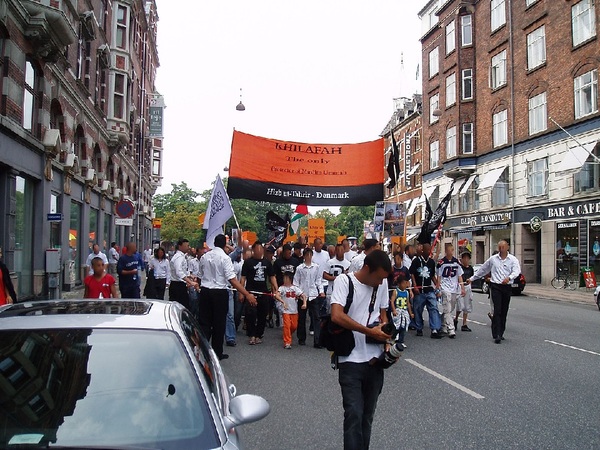
(function(d, s, id) { var js, fjs = d.getElementsByTagName(s)[0]; if (d.getElementById(id)) return; js = d.createElement(s); js.id = id; js.src = “https://connect.facebook.net/en_US/sdk.js#xfbml=1&version=v3.0”; fjs.parentNode.insertBefore(js, fjs); }(document, ‘script’, ‘facebook-jssdk’)); –>
–>
August 5, 2023
In January 2023, the Danish-Swedish politician Rasmus Paludan burned a copy of the Quran outside of the Turkish embassy. This led the Turkish defense minister Hulusi Akar to suspend talks with Sweden over its NATO membership. This means that Quran burnings are going to have bigger and bigger consequences. What to do? Should consideration be given to amending legislation such that burning holy books is made a criminal offense?
‘); googletag.cmd.push(function () { googletag.display(‘div-gpt-ad-1609268089992-0’); }); document.write(”); googletag.cmd.push(function() { googletag.pubads().addEventListener(‘slotRenderEnded’, function(event) { if (event.slot.getSlotElementId() == “div-hre-Americanthinker—New-3028”) { googletag.display(“div-hre-Americanthinker—New-3028”); } }); }); }
Sweden’s embassy in Baghdad has already been stormed twice. The terrorism threat level in Sweden has been raised. And the Swedish ambassador has been taken to task in almost every Islamic country.
The problem, as we know, is not new. But not everyone knows the context. The controversy did not start with Koran-burning, but with political satire. It began in 1987 when discussion erupted in the Netherlands over a satirical film about Ayatollah Khomeini made by Dutch-born comic and showmaster Rudi Carrell. Khomeini was angry and Carrell was threatened. The Netherlands caved in and that was the provisional end of the Dutch discussion.
Khomeini had learned something from that: threats work. Terrorism works. You don’t always have to use actual violence; the threat of it is often enough. Two years later, in 1989, Khomeini tried his what can be called “theoterrorist strategy” again and this time in a way that would become an international riot: issuing a death sentence on the British writer Salman Rushdie. In response, the British government was not better prepared than the Dutch: after pacifying, diplomatic consultations and securing Rushdie, they tried to calm things down. In vain, as we now know, because on August 12, 2022, 33 years after the death sentence, Rushdie was attacked by a 24-year-old man armed with a knife in the United States. Rushdie survived the assassination attempt, but he now goes through life partially disabled.
‘); googletag.cmd.push(function () { googletag.display(‘div-gpt-ad-1609270365559-0’); }); document.write(”); googletag.cmd.push(function() { googletag.pubads().addEventListener(‘slotRenderEnded’, function(event) { if (event.slot.getSlotElementId() == “div-hre-Americanthinker—New-3035”) { googletag.display(“div-hre-Americanthinker—New-3035”); } }); }); }
 Following the murder of Dutch filmmaker and columnist Theo van Gogh in the Netherlands in 2004, the Danes in 2005 had become interested in whether self-censorship was practiced in the western world. How boldly is freedom of expression defended in the West? Does that freedom of expression still exist? And how could you find out such a thing? Simply, through an experiment. Danish newspaper Jyllands Posten invited some cartoonists to make a cartoon about the prophet Mohammed. Would cartoonists dare to make such a cartoon? Yes, some dared. But, once published, it resulted in a huge Danish riot. The cartoonists went into hiding from the threat of violence, cloaked in anonymity, all in the hope that the case would be forgotten. Only Kurt Westergaard (1925-2021) stood his ground. He would not go hiding from his attackers, and that meant accepting a heavy surveillance regime that differed from little of a real prison. Westergaard, incidentally, died in his bed, with his head not separated from his body.
Following the murder of Dutch filmmaker and columnist Theo van Gogh in the Netherlands in 2004, the Danes in 2005 had become interested in whether self-censorship was practiced in the western world. How boldly is freedom of expression defended in the West? Does that freedom of expression still exist? And how could you find out such a thing? Simply, through an experiment. Danish newspaper Jyllands Posten invited some cartoonists to make a cartoon about the prophet Mohammed. Would cartoonists dare to make such a cartoon? Yes, some dared. But, once published, it resulted in a huge Danish riot. The cartoonists went into hiding from the threat of violence, cloaked in anonymity, all in the hope that the case would be forgotten. Only Kurt Westergaard (1925-2021) stood his ground. He would not go hiding from his attackers, and that meant accepting a heavy surveillance regime that differed from little of a real prison. Westergaard, incidentally, died in his bed, with his head not separated from his body.
Now, with some good will, one could still argue that “cartoons” are not grounds for controversy. Even less so for a book burning. And even Rushdie’s literary satire can be seen as needlessly provocative. But does the same apply to a heavy theological discourse like that of Pope Benedict XVI (1927-2022) in Regensburg?
One year after the Danish cartoons, in 2006, the pope, the previous one, not this one, delivered a theological-philosophical address on “Faith, reason and university: memories and reflections” on September 12, in the auditorium of the university in Regensburg. It was not what the pope himself brought up in it about the relationship of reason to faith that attracted attention, but a quote he had presented. Just one quote. A quote from Emperor Manuel II (1349-1425) in a conversation about religion. The emperor had said, “Show me what news Mohammed brought, and you will find only evil and inhumanity, such as preaching faith by the sword.” Again: a riot of unprecedented proportions was the result. The pope apologized (rather unusually for a pope) and explained that he had been misunderstood: a quote after all, not his own opinion.
After the Danish cartoon adventure, the field of action shifted to France. The cartoonists of the French satirical magazine Charlie Hebdo continued to make the challenged cartoons. This led to the massacre of almost the entire editorial staff of the satirical magazine in 2015. Editor-in-chief Charb sensed the misery coming. He said — referring to Theo van Gogh, by the way — that he would rather die standing up than live on his knees. And so that’s what it came to: dying standing.
That French cartoon murder had far-reaching consequences. Even the showing of those French cartoons in a civics lesson by teacher Samuel Paty led to, this time not a “riot,” but his beheading, in the street, in Éragny, near the College du Bois d’Aulne where the victim taught.
A Dutch showmaster (Carrell), a British writer (Rushdie), Danish cartoonists (Westergaard), French cartoonists (Charb), the pope (Benedict XVI), demonstrating book burners (Paludan) — apparently they all know how to elicit fierce reactions from the easily inflamed elements in the Islamic world when it comes to the honor of one specific religious figure.
‘); googletag.cmd.push(function () { googletag.display(‘div-gpt-ad-1609268078422-0’); }); document.write(”); googletag.cmd.push(function() { googletag.pubads().addEventListener(‘slotRenderEnded’, function(event) { if (event.slot.getSlotElementId() == “div-hre-Americanthinker—New-3027”) { googletag.display(“div-hre-Americanthinker—New-3027”); } }); }); } if (publir_show_ads) { document.write(“
The Netherlands was the first to face the problem (1987). The Dutch pushed it on to England (1989). England pushed it on to Denmark (2005). Denmark pushed it on to France (2015). And now we are back to Denmark and Sweden (2023). The Swedes will now consider a book-burning ban.
Paul Cliteur is author of The Fall and Rise of Blasphemy Law (2016).
Image: User EPO
<!–
–>
<!– if(page_width_onload <= 479) { document.write("
“); googletag.cmd.push(function() { googletag.display(‘div-gpt-ad-1345489840937-4’); }); } –> If you experience technical problems, please write to [email protected]
FOLLOW US ON
<!–
–>
<!– _qoptions={ qacct:”p-9bKF-NgTuSFM6″ }; ![]() –> <!—-> <!– var addthis_share = { email_template: “new_template” } –>
–> <!—-> <!– var addthis_share = { email_template: “new_template” } –>






